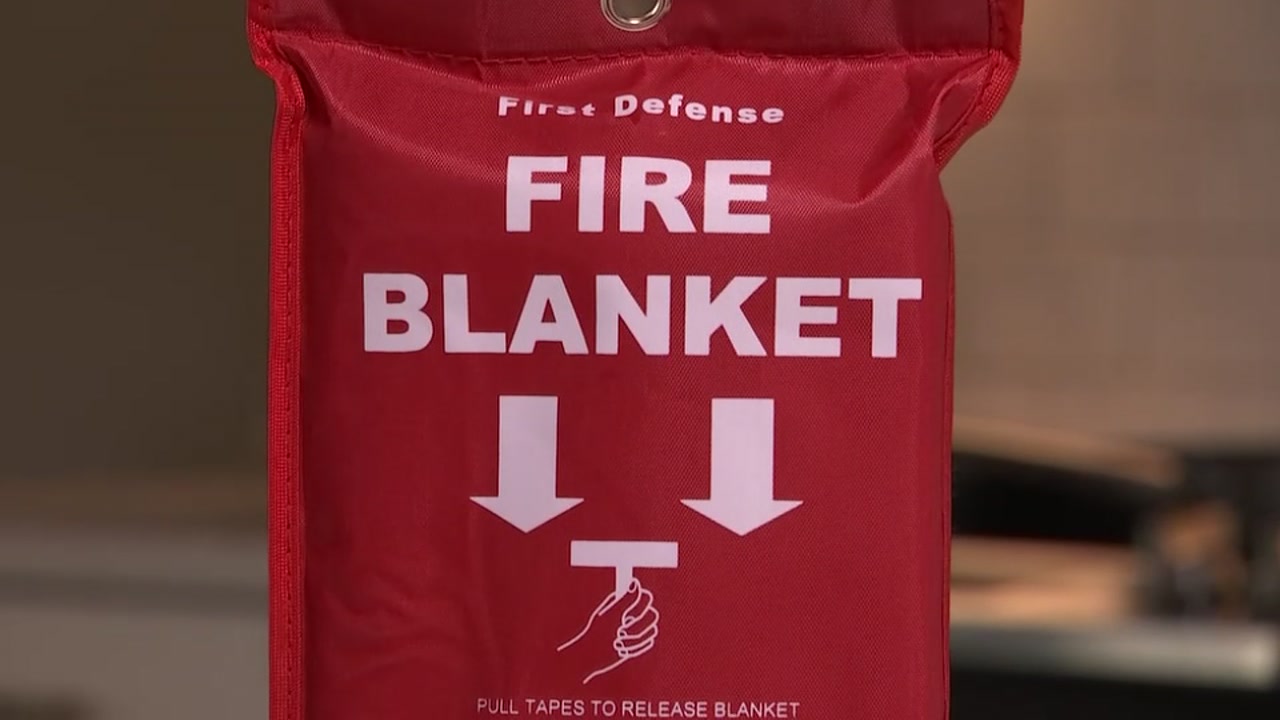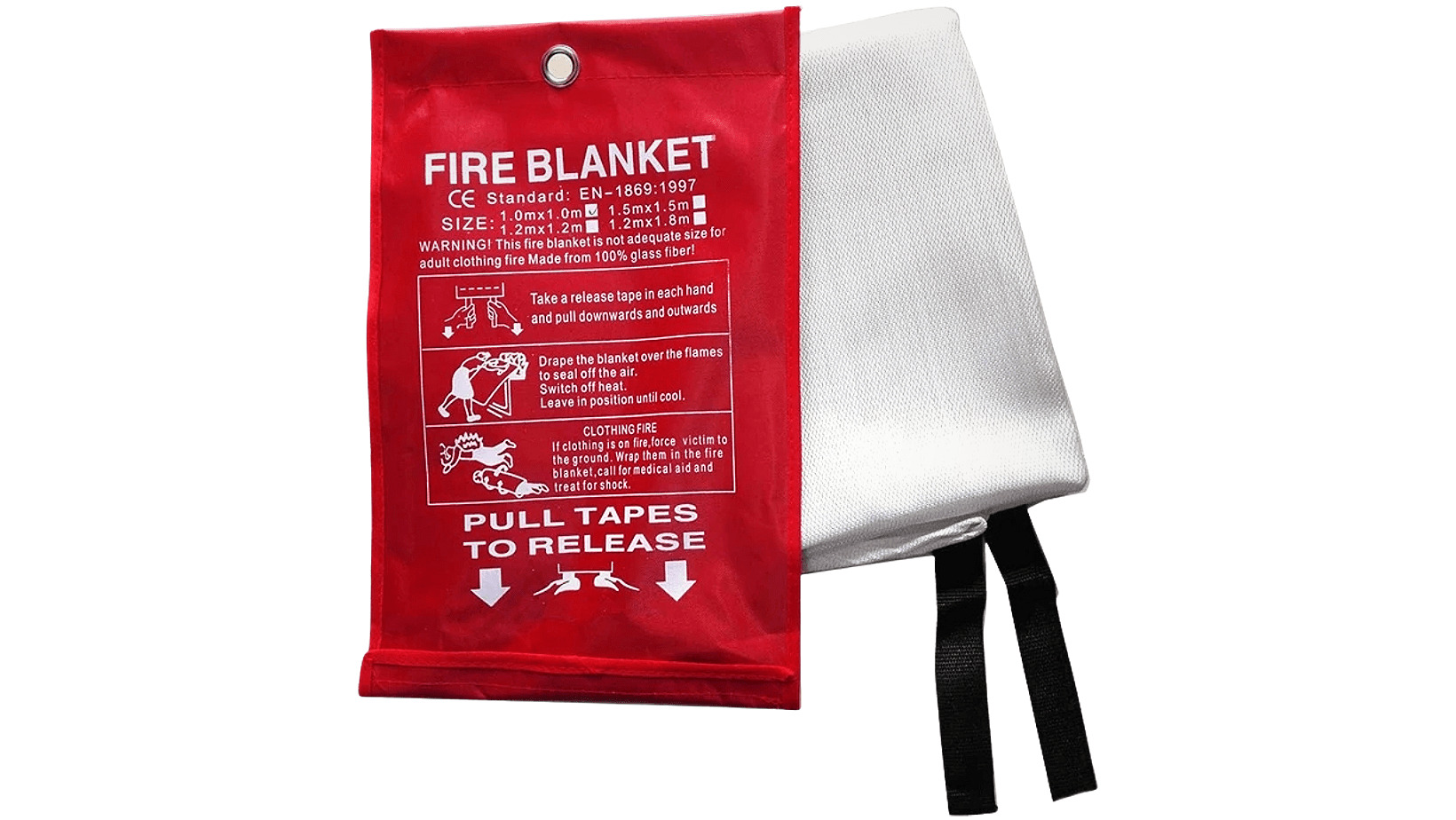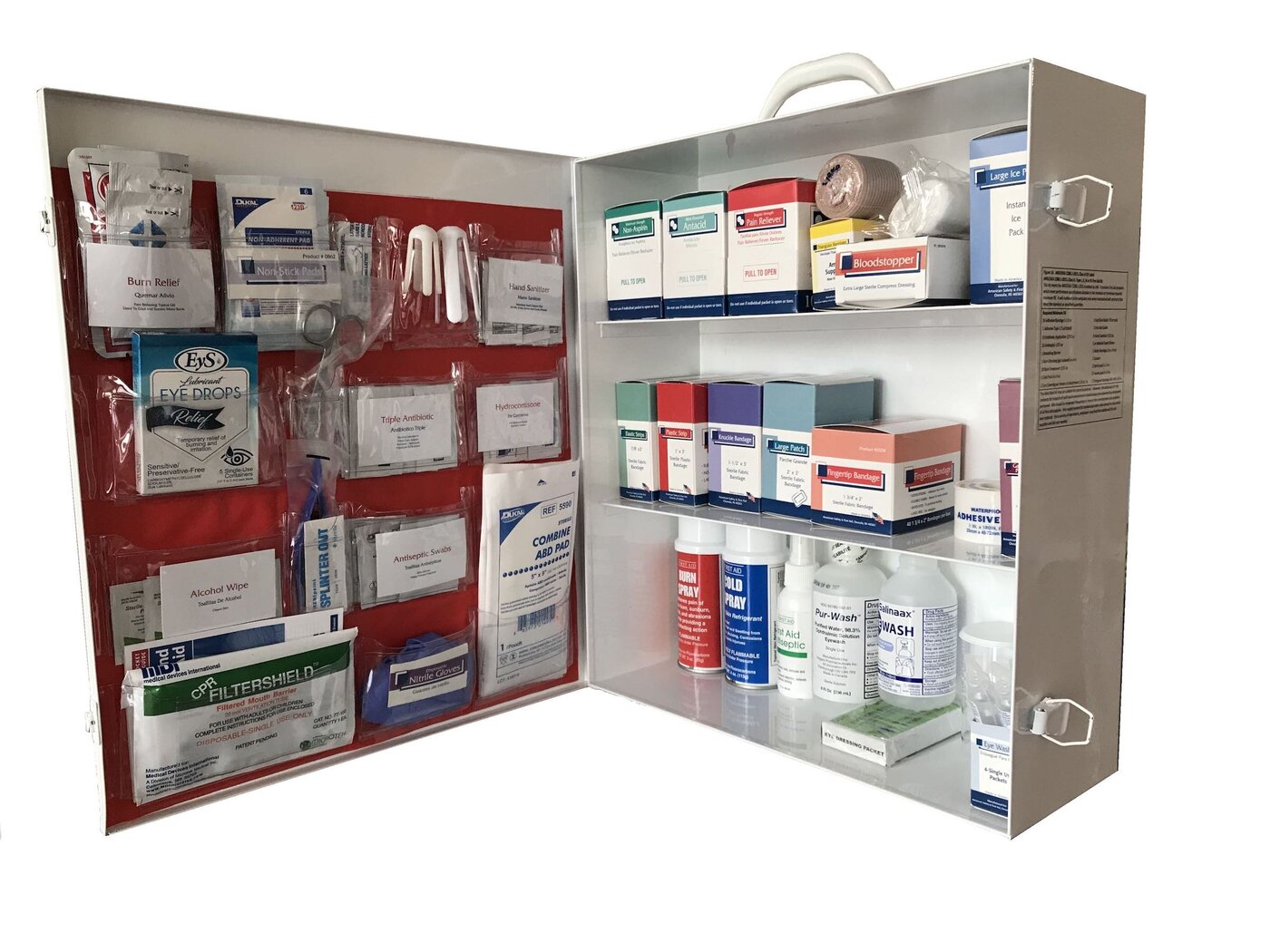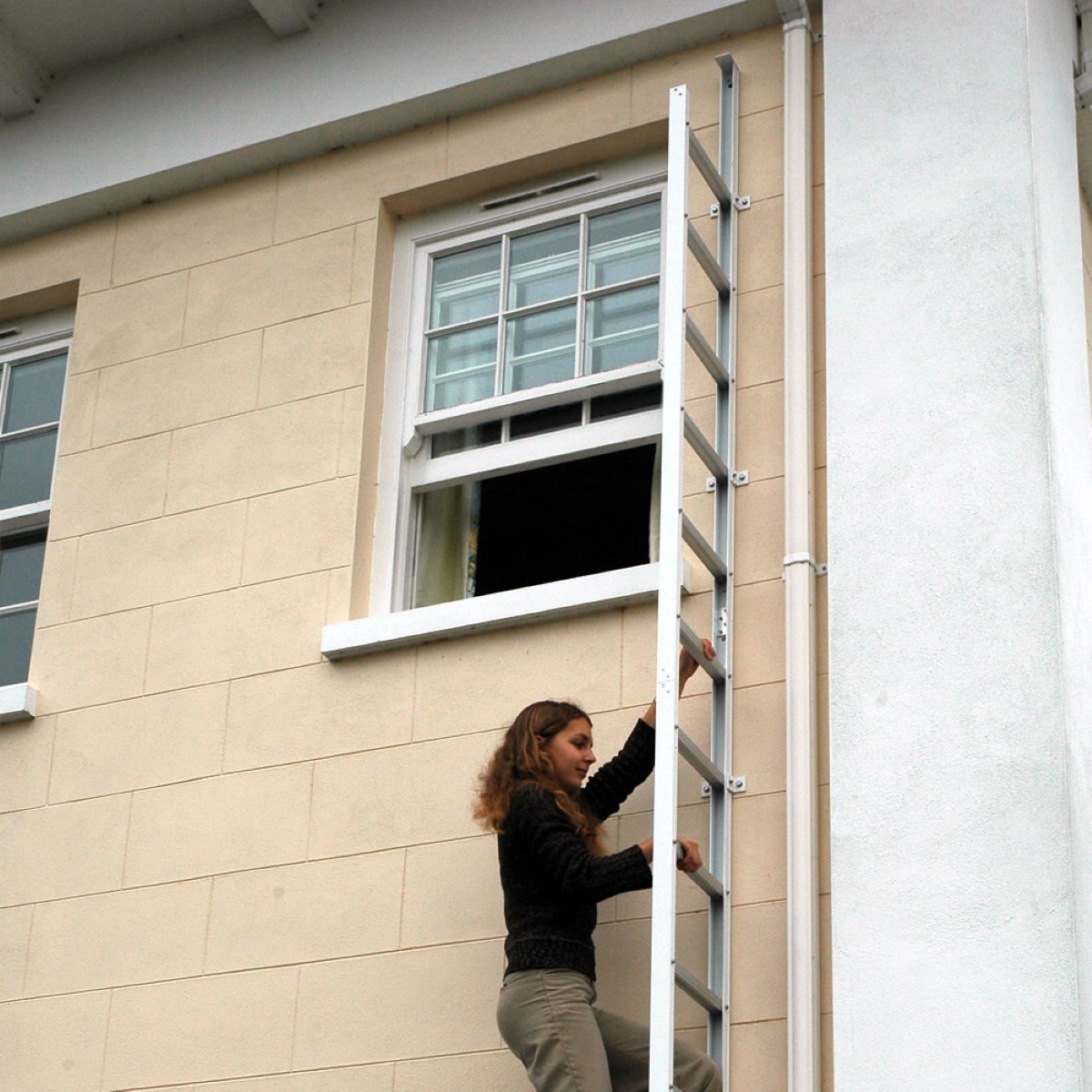Home>Maintenance & Safety>Safety Equipment & Products>How To Use A Fire Blanket In A Lab


Safety Equipment & Products
How To Use A Fire Blanket In A Lab
Modified: August 28, 2024
Learn the proper use of a fire blanket in a lab to ensure safety. Find essential safety equipment and products for your lab.
(Many of the links in this article redirect to a specific reviewed product. Your purchase of these products through affiliate links helps to generate commission for Storables.com, at no extra cost. Learn more)
Introduction
Welcome to the world of laboratory safety! In any laboratory setting, safety is of paramount importance, and being prepared for potential emergencies is a crucial aspect of ensuring a safe work environment. One essential tool for handling small fires in a laboratory is a fire blanket. This article will guide you through the proper usage of a fire blanket in a lab setting, providing you with the knowledge and confidence to respond effectively in the event of a fire emergency.
The use of fire blankets is a fundamental component of fire safety protocols, and understanding how to use them correctly can make a significant difference in mitigating fire-related risks. Whether you are a seasoned laboratory professional or a student embarking on your scientific journey, familiarizing yourself with the proper use of a fire blanket is an essential skill that can contribute to a safer laboratory environment for everyone.
In the following sections, we will delve into the intricacies of fire blankets, exploring their purpose, the scenarios in which they should be utilized, and the step-by-step process of deploying a fire blanket to extinguish small fires. Additionally, we will highlight important safety precautions to keep in mind when handling fire blankets, ensuring that you are well-equipped to respond to fire emergencies in a safe and effective manner.
By the end of this article, you will have gained a comprehensive understanding of how to use a fire blanket in a laboratory, empowering you to act swiftly and confidently in the face of a fire incident. Let's embark on this educational journey to enhance our knowledge of laboratory safety and equip ourselves with the essential skills to handle fire emergencies effectively.
Key Takeaways:
- Fire blankets are essential for lab safety, smothering small fires by cutting off oxygen. They’re versatile, non-flammable, and easy to use, making them a crucial tool for preventing fire incidents in laboratories.
- To use a fire blanket, assess the fire, protect yourself, cover the flames, and monitor the area. Safety precautions, training, and coordination are vital for effective fire blanket usage in labs.
Read more: How To Use A Fire Blanket
Understanding Fire Blankets
Fire blankets are versatile and effective safety tools designed to extinguish small fires by cutting off the fire’s oxygen supply. Typically made from fire-resistant materials such as fiberglass or wool, fire blankets are capable of smothering flames, making them an invaluable asset in laboratory settings where the potential for small fires exists.
These blankets are specifically engineered to withstand high temperatures and are non-flammable, allowing them to be safely used to extinguish fires without posing additional risks. The materials used in fire blankets are chosen for their ability to resist ignition and provide a protective barrier between the user and the fire, ensuring safe handling during emergency situations.
Fire blankets come in various sizes to accommodate different applications, and their compact and flexible nature makes them easy to store in laboratories, classrooms, and other facilities where fire hazards may be present. Their portability and quick accessibility make fire blankets an ideal first line of defense against small fires, offering a simple yet effective means of fire suppression.
Understanding the construction and capabilities of fire blankets is essential for utilizing them effectively in the event of a fire emergency. By familiarizing yourself with the properties and intended use of fire blankets, you can harness their potential to swiftly and safely address small fires, helping to prevent the escalation of fire-related incidents in laboratory environments.
Now that we have established a foundational understanding of fire blankets, let’s explore the scenarios in which these invaluable safety tools should be employed to safeguard against potential fire hazards in laboratories.
When to Use a Fire Blanket
Knowing when to use a fire blanket is crucial for effectively addressing small fires in a laboratory setting. While fire blankets are not suitable for extinguishing large or spreading fires, they are highly effective for smothering small, contained fires and can be instrumental in preventing the escalation of fire incidents. Understanding the specific scenarios in which a fire blanket should be utilized is essential for implementing timely and appropriate fire safety measures.
Here are several common situations in which using a fire blanket is recommended:
- Laboratory Bench Fires: In the event of a small fire on a laboratory bench, such as a chemical spill igniting, a fire blanket can be used to smother the flames quickly and effectively, preventing the fire from spreading and causing further damage.
- Clothing Fires: If a person’s clothing catches fire, a fire blanket can be used to wrap around the individual to extinguish the flames. This can provide vital protection and help prevent severe burns.
- Flammable Liquid Fires: When dealing with small fires involving flammable liquids, a fire blanket can be employed to cover the container or spill, cutting off the oxygen supply and extinguishing the flames.
- Electrical Fires: In the case of a small electrical fire, a fire blanket can be used to smother the flames by covering the source of the fire, such as an overheated electrical device or a sparking outlet.
It is important to note that fire blankets are not suitable for tackling fires involving cooking oils, deep fryers, or other large-scale fires. In such cases, appropriate fire suppression methods and equipment should be utilized, and emergency services should be contacted immediately.
By recognizing the specific scenarios in which a fire blanket is the most effective fire suppression tool, individuals in laboratory environments can act decisively and confidently in the face of small fire incidents, contributing to a safer and more secure workplace for all personnel.
Now that we understand when to use a fire blanket, let’s delve into the step-by-step process of deploying a fire blanket to extinguish small fires in a laboratory setting.
When using a fire blanket in a lab, always remember to carefully and quickly place the blanket over the flames to smother the fire. Then, turn off any heat sources and evacuate the area.
Steps to Use a Fire Blanket
Deploying a fire blanket to extinguish a small fire in a laboratory requires a systematic approach to ensure the safety of the individual using the blanket and the effective suppression of the fire. By following the appropriate steps, you can confidently and efficiently utilize a fire blanket to smother flames and prevent the escalation of fire incidents. Here are the essential steps to use a fire blanket:
- Assess the Situation: Before attempting to use a fire blanket, assess the size and nature of the fire. If the fire is large, spreading rapidly, or poses a significant risk, evacuate the area immediately and contact emergency services.
- Retrieve the Fire Blanket: If the fire is small and contained, retrieve the fire blanket from its designated storage location. Fire blankets are often housed in easy-to-access containers or cabinets, ensuring quick availability in the event of an emergency.
- Protect Yourself: Prioritize personal safety by standing clear of the flames and ensuring that your path to the fire is unobstructed. If the fire is near a chemical spill or hazardous materials, exercise caution and adhere to safety protocols.
- Approach the Fire: Carefully approach the fire, holding the fire blanket by its handles or corners to maintain a secure grip. Avoid making sudden movements that could agitate the flames.
- Cover the Fire: Gently drape the fire blanket over the flames, ensuring that the entire fire is covered. Use a sweeping motion to smother the fire and cut off its oxygen supply. Do not attempt to physically touch the flames or the source of the fire.
- Leave the Blanket in Place: Once the fire is covered, leave the fire blanket in place for a sufficient duration to ensure that the flames are fully extinguished. This will help prevent any potential re-ignition of the fire.
- Monitor the Area: After using the fire blanket, monitor the area to ensure that the fire has been successfully extinguished. Be cautious of hot surfaces and potential re-ignition, and do not remove the fire blanket prematurely.
- Seek Assistance: After the fire has been suppressed, seek assistance from laboratory personnel, safety officers, or emergency services to assess the situation and address any potential hazards or damage.
By following these steps, individuals can effectively utilize fire blankets to address small fires in laboratory environments, contributing to a proactive approach to fire safety and emergency response.
Now that we have explored the step-by-step process of using a fire blanket, it is essential to highlight the safety precautions that should be observed when handling fire blankets in laboratory settings.
Safety Precautions
When handling fire blankets in laboratory settings, it is crucial to observe specific safety precautions to ensure the effective and safe utilization of these essential fire safety tools. By adhering to the following safety measures, individuals can mitigate potential risks and respond to fire emergencies in a responsible and secure manner:
- Training and Familiarization: Prior to using a fire blanket, individuals should receive proper training and familiarize themselves with the location and deployment of fire blankets in the laboratory. Understanding the correct usage and storage of fire blankets is essential for swift and effective response to fire incidents.
- Protective Equipment: When approaching a fire, ensure that appropriate personal protective equipment, such as heat-resistant gloves and safety goggles, is worn to safeguard against heat and potential splattering of hot materials.
- Clear Evacuation Routes: Before attempting to use a fire blanket, identify and ensure clear evacuation routes in case the fire escalates beyond the capabilities of the fire blanket. Safety should always be the top priority, and evacuation procedures should be established and communicated to all laboratory personnel.
- Communication and Coordination: In the event of a fire incident, communicate the situation to other laboratory personnel and alert them to the deployment of the fire blanket. Coordination and collaboration can facilitate a prompt and organized response to fire emergencies.
- Proper Maintenance: Regularly inspect and maintain fire blankets to ensure their integrity and functionality. Damaged or soiled fire blankets should be promptly replaced to guarantee their effectiveness in the event of an emergency.
- Caution with Chemical Fires: Exercise caution when using fire blankets to suppress fires involving chemicals or hazardous materials. Some chemical reactions may produce toxic fumes when smothered, necessitating additional safety measures and the involvement of trained personnel.
- Post-Incident Evaluation: After using a fire blanket, conduct a post-incident evaluation to assess the effectiveness of the response and identify any areas for improvement. Learning from fire incidents can enhance preparedness and safety protocols in the laboratory.
By prioritizing safety precautions and responsible practices, individuals can enhance their readiness to handle fire emergencies and contribute to a secure laboratory environment. The effective utilization of fire blankets, coupled with stringent safety measures, forms a critical component of comprehensive fire safety protocols in laboratory settings.
As we conclude our exploration of safety precautions, it is evident that a proactive and informed approach to fire safety is essential for maintaining a secure laboratory environment. Let’s recap the key insights we have gained and conclude our journey through the use of fire blankets in laboratory settings.
Read more: What Is A Fire Blanket Used For
Conclusion
As we conclude our exploration of the use of fire blankets in laboratory settings, it is evident that these versatile safety tools play a pivotal role in mitigating fire-related risks and fostering a secure work environment. By understanding the purpose, deployment, and safety considerations associated with fire blankets, individuals in laboratory settings can enhance their preparedness to respond to fire emergencies effectively.
From understanding the construction and capabilities of fire blankets to recognizing the specific scenarios in which they should be utilized, we have delved into the fundamental aspects of fire blanket usage. By following the essential steps to deploy a fire blanket and observing stringent safety precautions, individuals can contribute to a proactive and responsible approach to fire safety in laboratories.
Fire blankets serve as a first line of defense against small fires, offering a simple yet effective means of fire suppression. Their compact and portable nature, coupled with their ability to smother flames by cutting off the oxygen supply, makes them invaluable assets in laboratory environments where fire hazards may be present.
As we strive to create and maintain safe laboratory environments, the knowledge and skills acquired in this exploration of fire blankets will empower individuals to respond to fire incidents confidently and responsibly. By prioritizing safety, training, and preparedness, we can collectively contribute to a culture of proactive fire safety and emergency response in laboratory settings.
In conclusion, the proper understanding and utilization of fire blankets are integral to fostering a secure and resilient laboratory environment. By equipping ourselves with the knowledge and skills to effectively deploy fire blankets, we can uphold the principles of safety and preparedness, ensuring that laboratories remain safeguarded against fire-related risks.
Thank you for embarking on this educational journey to explore the use of fire blankets in laboratory settings. Let’s continue to prioritize safety, preparedness, and proactive measures to uphold a culture of fire safety in laboratories around the world.
Frequently Asked Questions about How To Use A Fire Blanket In A Lab
Was this page helpful?
At Storables.com, we guarantee accurate and reliable information. Our content, validated by Expert Board Contributors, is crafted following stringent Editorial Policies. We're committed to providing you with well-researched, expert-backed insights for all your informational needs.















0 thoughts on “How To Use A Fire Blanket In A Lab”